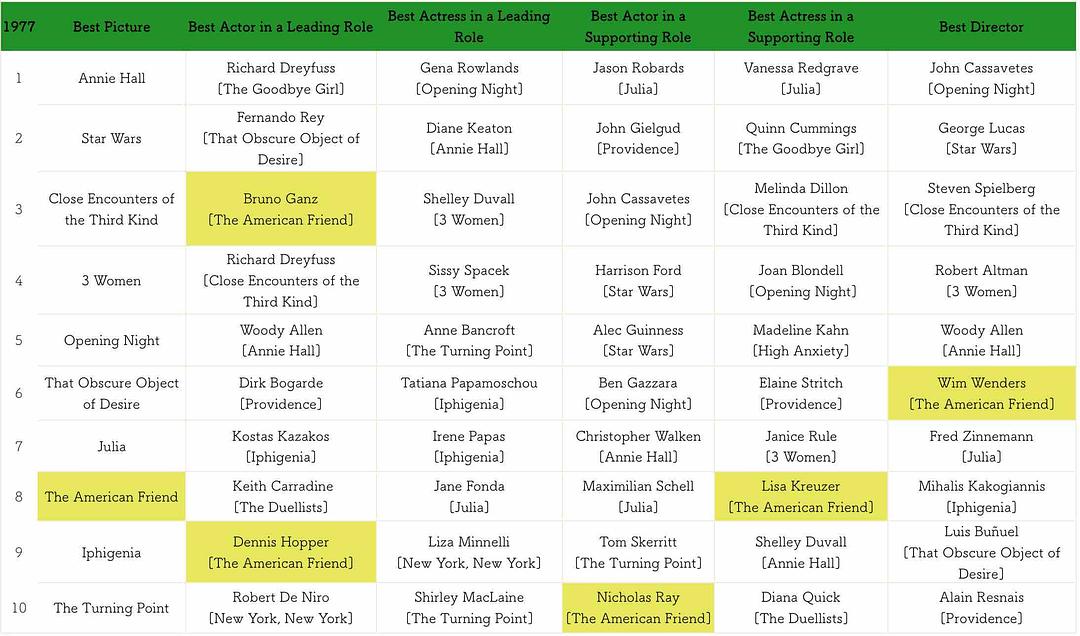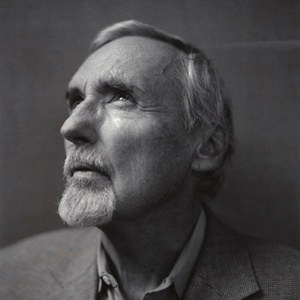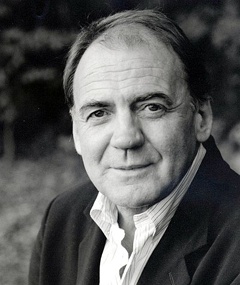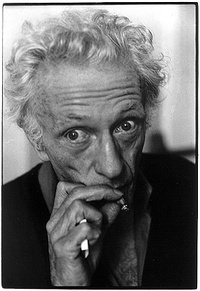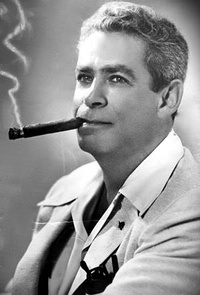美国朋友 Der amerikanische Freund(1977)
简介:
- 在一场艺术品拍卖会上,汤姆(丹尼斯·霍珀 Dennis Hopper 饰)遇见了名为乔纳森(布鲁诺·甘茨 Bruno Ganz 饰)的男人。乔纳森患有血液方面的疾病,这对于他那并不富裕的家庭来说无异于雪上加霜。黑手党找到了汤姆希望他能够帮他们完成一项暗杀任务,不愿意铤而走险的汤姆想到了乔纳森。
演员:
影评:
一、剪辑
我记忆最深刻的一个镜头:
他把在巴黎的约纳生,剪到在纽约的里普利;把在搭机飞往汉堡的里普利,剪到搭火车赴汉堡的约纳生,接着就是约纳生黎明走在汉堡河畔的镜头。汉堡与纽约的场景都是在河畔的道路。
在巴黎,文德斯用了一个叫作“小曼哈顿”的场景,在那儿的塞纳河畔,竖立了一座自由女神像的复制品。有一幕都市场景的镜头剪接如下:
1.巴黎“小曼哈顿”市景的横摇镜头
2.从约纳生旅馆房间俯拍。
3.约纳生汉堡住家的电话铃响镜头
4.真正的曼哈顿大厦群剪影(从布鲁克林拍
5.德瓦的仓库式住家(曼哈顿)场景。
6.约纳生巴黎旅馆房间,电话铃正响着。
7.米诺站在巴黎公寓阳台上,正在接电话。
8.从约纳生旅馆房间拍的第二个巴黎市景的横摇镜头,米诺小小的身影正在阳台上挥手
9.约纳生挂电话
10.约纳生旅馆电梯特写镜头
11.约纳生手中一份伪造医疗报告的特写,接着是米诺公寓的场景。约纳生合上报告时,塞纳河畔的自由女神像变得清晰可见。
一口气看完是真的服气
二、色彩运用
和剪辑一样,电影中的色彩运用具有令人震撼与不安的效果。当约纳生第一次杀人后,走出地下铁车站时,整座城市沉浸在火烧似的红橙色中。稍后他离开巴黎时,天空是紫色的。汉堡港口则有时呈橘色,有时紫色。
为了达到这些艳丽的效果,镜头不加滤镜,也不修正霓虹灯色彩,强烈的色彩刻画出约纳生平静生活与黑道世界之间的冲突。约纳生的公寓与工作房幽暗而色调自然,装潢与采光造成“林布兰棕色”的效果。相反的,黑道人物的色彩则为红与橘。约纳生在巴黎的旅馆房间以红、橘色装潢,窗外还有看来虎视眈眈的橘色建筑起重机。里普利卧房的红色令人触目惊心,丝绸床单和窗帘全是红的。红与鲜血的关系呈现得最戏剧化的时刻,莫过于萨姆·富勒所饰之角色在港边阶梯倒下死亡的那一幕,河畔马路上的红灯使他的鲜血都发光了。
绿色也与里普利有关联。绿色的弹子台,由上方的 CanadaDry广告牌照亮,发出绿光。有一回我们看到他在弹子台旁吃早餐,另一回则用拍立得替自己拍照。稍后,当他在电话里和约纳生谈话时,整个人浴在绿光里。这种常与疾病和“火星来的小人儿”联想在一起的颜色,也强调了里普利的怪异。
三、配乐
若以惊悚片视之,它的冥思性高于悬疑性,不过文德斯往往透过声音与色彩等完全正规的手法来制造张力。电影配乐利用不和谐的和弦来传达步步惊魂的感觉,从而在故事办不到的时候,制造了紧张。
有时候,动物的声音增加了紧张,并与约纳生较晦暗的情绪相关。在一个场景中,他走出儿子房间的小阳台,对丹尼尔和玛莉安挥手道别。他望着他们离去,陷于沉思,由于前一天收到那封假电报,他又气又怕。在他上空盘旋的水鸟叫声,在声带上突然变得非常大而且刺耳。他转身,踉跄地走回卧房,被丹尼尔的玩具电车绊倒,这时内心独白出现。在背景中,港边机器声砰砰作响,就像约纳生的心跳声。约纳生砸碎工作房中画框的场面,和里普利沿着小巷来找他的镜头交互剪接。在巷中,狗吠得很凶,约纳生砸画框的声响,和狗吠重叠在一起。
大师之作。
rtrtrtrtrtrtrtrtrtrt…。……………??、、、//?,?、、、、、、、、////////////////rtrtrtrtrtrtrtrtrtrt…。……………??、、、//?,?、、、、、、、、////////////////如题如题如题如题/如题如题如题如题/如题如题如题如题/如题如题如题如题/如题如题如题如题/如题如题如题如题/如题如题如题如题
维姆·文德斯的《美国朋友》大概是他娱乐性最高的作品了,这部电影改编自派翠西亚·海史密斯的著名犯罪小说“雷普利系列”的第三部《雷普利的游戏》。这本书曾两次搬上银幕,第二次的导演是意大利女导演莉莉安娜·卡瓦尼,她最有名的作品是《午夜守门人》。
文德斯版忽视了雷普利,竟将主角换成了乔纳森,而且忽略了情节的描述,着重了氛围的营造和心理刻画。如果你看过文德斯的偶像尼古拉斯·雷的《高于生活》,就会理解文德斯这么做的根由了,这部电影实际上是讲一个绝症男人的中年危机。

不得不说扮演乔纳森的布鲁诺·甘茨的演技真好,一个老实木纳的中年人被唆使去杀人,从最初的惶恐不安,到后来的铤而走险,再到最终的绝望放任,他真的乐在其中于这个游戏了。而雷普利却更加的阴郁,他和乔纳森的关系更像法斯宾德的史诗巨著《柏林压力山大广场》中的赖因霍尔德和毕勃科夫之间的关系。
片中乔纳森和妻儿的关系是疏离的,两人分居、貌合神离。这一点和后来的卡瓦尼版大相径庭,后者用足够的篇幅来描述乔纳森的“家庭幸福”,他上了雷普利的贼船都是为了家庭。而《美国朋友》中的乔纳森却大部分是为了“放飞自我”,以摆脱无聊乏味的刻板生活。
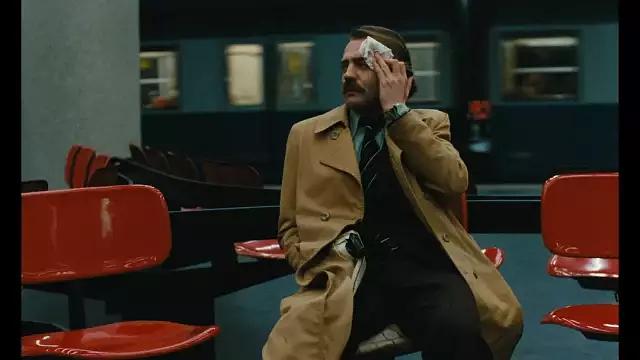
片中的地铁站追杀一段拍的非常精彩。整段戏没有台词,直接用肢体语言来表达乔纳森的急躁、犹豫、怯懦、笨拙,他藏在风衣里的枪甚至裸露在外,让人替他着急。正当观众的耐心就要耗尽时,乔纳森在扶梯上突然开枪,让人始料未及。这段戏很不“文德斯”,我估计有参演的大导演--尼古拉斯·雷或塞缪尔·富勒出的一份力。
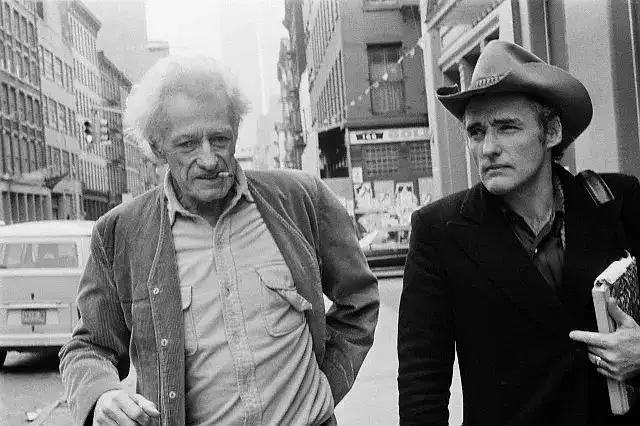
之后在火车上两人共同作案一节显得中规中矩了,丹尼斯·霍普在片中显得格格不入,好像一个局外人。卡瓦尼拍的这一段和文德斯的差不多,但增添了黑色幽默感,她的雷普利--约翰·马尔科维奇擅长演“狠人狼狈”这类的戏,他抢了乔纳森的所有风头。

《美国朋友》的结局很暧昧,乔纳森知道被骗却无动于衷,反而对自己最后的这段蹩脚杀手的经历非常满意。在弥留之际,他甩开了雷普利飞车而去,并狂笑不止。雷普利满含眼泪深情地凝视着乔纳森走向死亡,似乎也羡慕他最终摆脱了中年危机,结束了没有希望的灰暗残生。相比之下,卡瓦尼版的就俗气多了,乔纳森竟然为雷普利挡子弹死了,也太“吴宇森”了吧!


At the age of 32, a prolific Wim Wenders forays into adapting Patricia Highsmith’s Tom Ripley story to the celluloid screen in his seventh feature, THE AMERICAN FRIEND receives a Cannes main competition entry and stars Dennis Hopper as the self-exile middle-aged Tom Ripley in a cowboy hat living inside a big mansion on his ownsome in Hamburg, partakes in art forgery racket. Nicholas Ray plays a presumedly dead painter Derwatt, sometimes wears an eye-patch, cynically tossing off new works for Ripley to sell in the auction house.
It is where, Ripley meets Jonathan Zimmermann (Bruno Ganz in his big screen breakout role), a painter framer and art restorer, who is diagnosed with a rare blood disease, may or may not be pushing up daisies any day sooner, Jonathan unceremoniously brushes aside Ripley with a curt“I’ve heard of you” (a , the slight triggers the latter’s retaliation (typically Ripley!), by disseminating rumors about the former’s blood condition to be fatal, and recommends Jonathan when a French gangster Raoul Minot (Blain) needs a candidate with a clean slate as a hitman.
Rebuffing Minot’s offer at first, Jonathan naively agrees to have another medical checkup in a Parisian hospital organized by Minot, beyond any doubt, no one would believe that its pessimistic outcome is not doctored by Minot but Jonathan himself, tempted to earn some fast money for his wife Marianne (Kreuzer) and their son Daniel (Dedecke) when he will be gone, he commits his first sortie (conveniently) inside a Paris metro station (albeit drolly clumsy) before heading back to Hamburg.
However, an improbable freemasonry between Ripley and Jonathan burgeons in spite of their prima facie disfavor, Wenders fidgets with multifarious artifacts to smooth the transition, objects like golden foil, zoetrope, stereopticon, gyroscope, Polaroid, etc. suffuse the faintly insipid narrative with its ethos-signalling vim and melancholia, which writs large in Ripley’s solitary existence, e.g. his monologue “There is nothing to fear but fear itself” is manifested not once but twice,infused with lurid chromatic choices in full bloom (red, blue, leaden-gray and green are primal pointers to the mood-scape). Their bond veers into partners-in-crime when Jonathan nearly botches a second mission on a train from Munich to Hamburg if not for Ripley’s sudden succor, and Ripley’s confession as the rumormonger, apparently doesn’t stir Jonathan’s ill-feelings, only leads to a final betrayal after they eliminate their common assailants, that halts with an ironic outcome when mortality suddenly beckons.
Less a genre practitioner than an arch stylist, Wenders meanders through the discomfiting drama with an Edward Hopper-esque commitment to its milieu and surroundings, tonally, it bewitchingly tallies with Tom Ripley’s existential crisis which vaguely stoked by a smack of homoerotic impulse, and Jonathan’s thrill-inflected imprudence. A brooding Bruno Ganz eloquently betrays an enthralling temperament which is buried under Jonathan’s pedestrian appearance, and is affectively unpredictable and sympathetic in the eyes of this beholder. Dennis Hopper has a less prominent screen-time but it is an eye-pleasing experience (on the condition that if we could overlook his unsavory wig during the scenes of the second mission)to watch him not in his trademark menacing mode, but registers something more self-revealing.Lisa Kreuzer, is hindered by a stereotyped suspicious wife role, must put on a strong face against all odds, yet plumbing into a feminine mindset is not Wenders’ forte.
A cineaste’s lollapalooza, with many an auteur taking on an acting gig (Nicolas Ray, Samuel Fuller, Daniel Schmid, Jean Eustache, not to mention actor/director hyphenates Hopper and Blain), THE AMERICAN FRIEND is a testament that Wenders’ faculty is on the verge of its full maturity, not a conventionally cut-throat crime thriller but a nostalgic scenester recapitulating its zeitgeist with a splash of idiosyncrasy and quaintness.
referential points: Wenders’ ALICE IN THE CITIES (1974, 8.0/10), Anthony Minghella’s THE TALENTED MR. RIPLEY (1999, 8.4/10).
